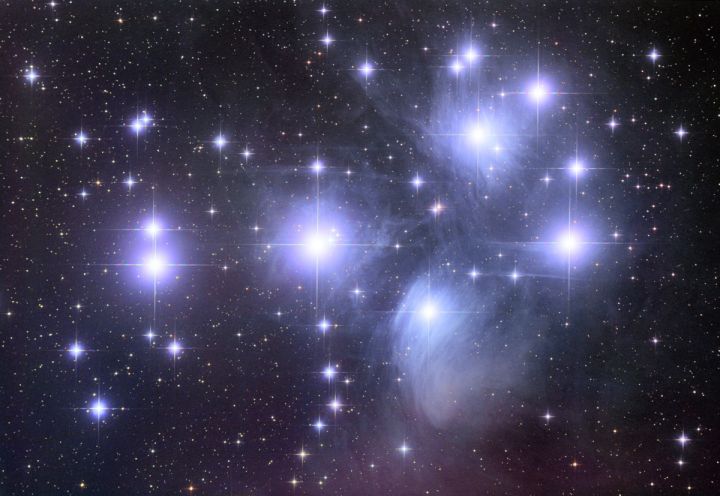
|
Credit & Copyright: Robert Gendler
Explanation:
Perhaps the most famous star cluster on the sky, the
Pleiades
can be seen without binoculars from even the depths of a
light-polluted city.
Also known as the Seven Sisters and
M45,
the Pleiades
is one of the brightest and closest
open clusters.
The Pleiades
contains over 3000 stars, is about 400 light years away,
and only 13 light years across.
Quite evident in the
above
photograph are the blue
reflection nebulae
that surround the brighter cluster
stars.
Low mass, faint, brown dwarfs have also
been found in
the
Pleiades.
(Editors' note: The prominent
diffraction spikes were added
to the image for aesthetic reasons, produced by kite string donated
by Rob Gendler's kids and placed over the telescope dew shield.)
|
January February March April May June July August September October November December |
| ||||||||||||||||||||||||||||||||||||||||||||||||
NASA Web Site Statements, Warnings, and Disclaimers
NASA Official: Jay Norris. Specific rights apply.
A service of: LHEA at NASA / GSFC
& Michigan Tech. U.
Based on Astronomy Picture
Of the Day
Publications with keywords: pleiades - star cluster - M 45
Publications with words: pleiades - star cluster - M 45
See also:
- APOD: 2025 January 27 Á Pleiades over Half Dome
- APOD: 2024 December 9 Á Pleiades: The Seven Sisters Star Cluster
- APOD: 2024 September 29 Á Seven Dusty Sisters
- Young Star Cluster NGC 1333
- APOD: 2024 September 3 Á Quarter Moon and Sister Stars
- APOD: 2024 January 29 Á The Pleiades: Seven Dusty Sisters
- APOD: 2024 January 15 Á Star Cluster IC 348 from Webb
